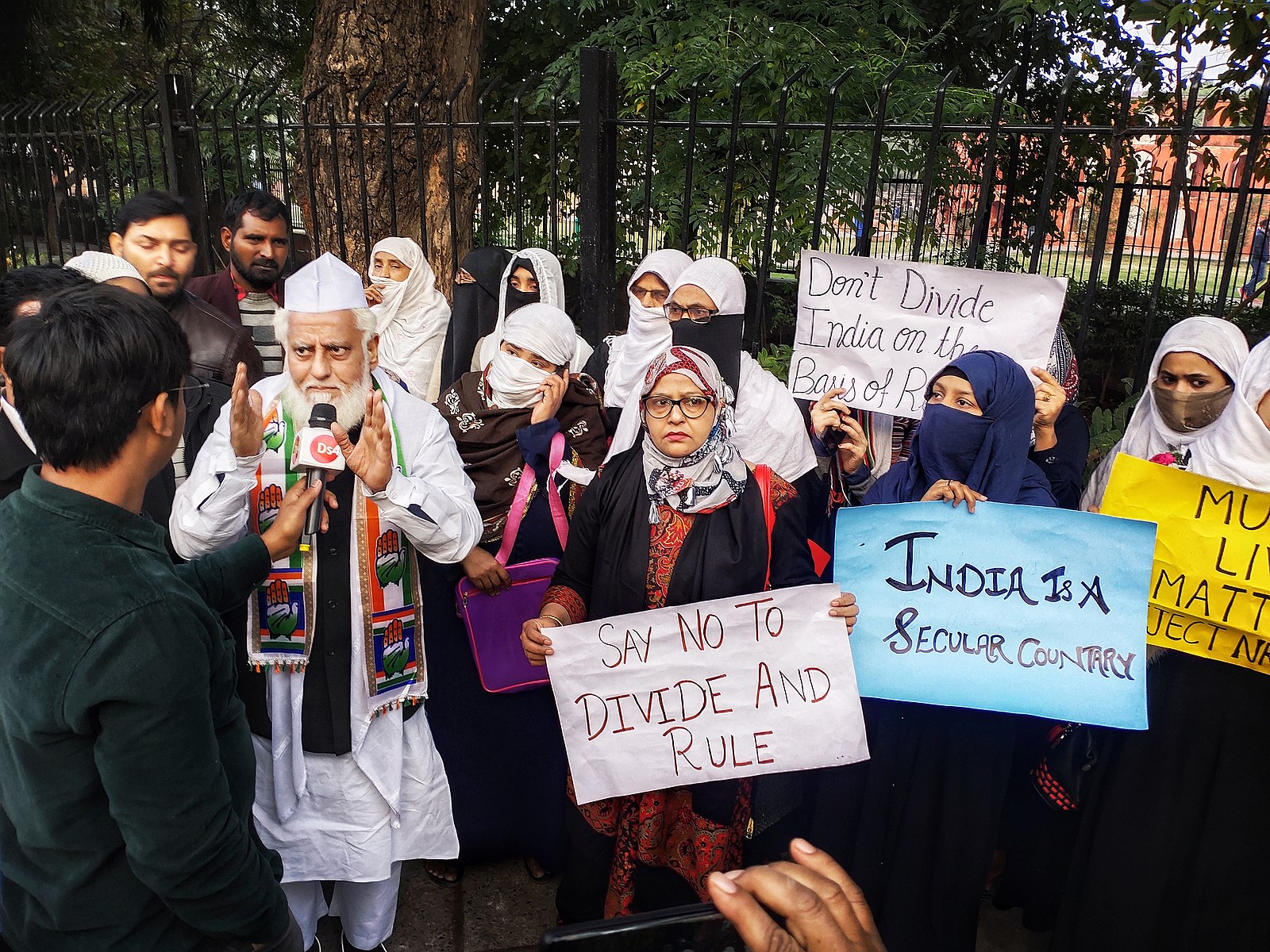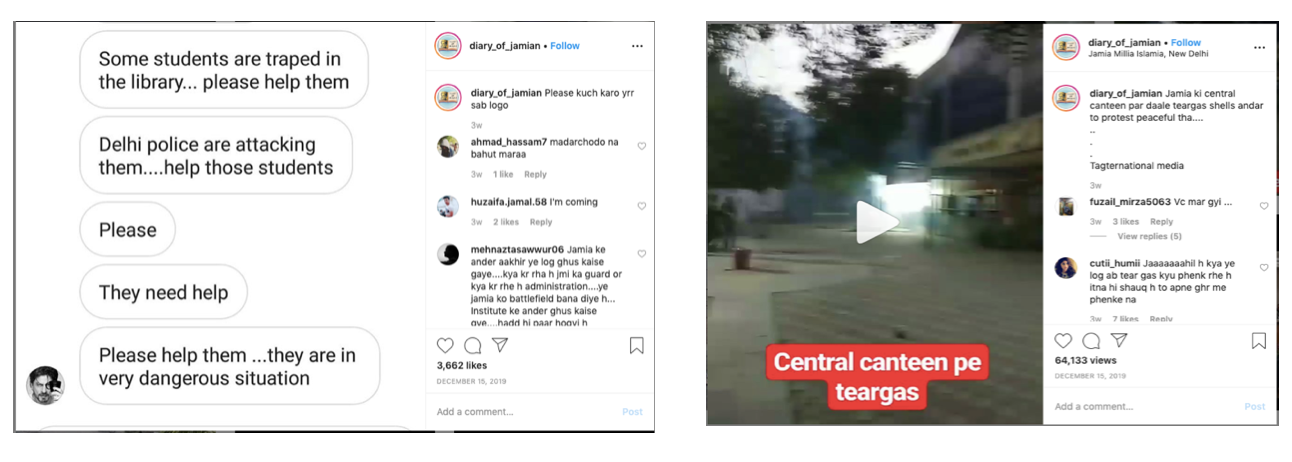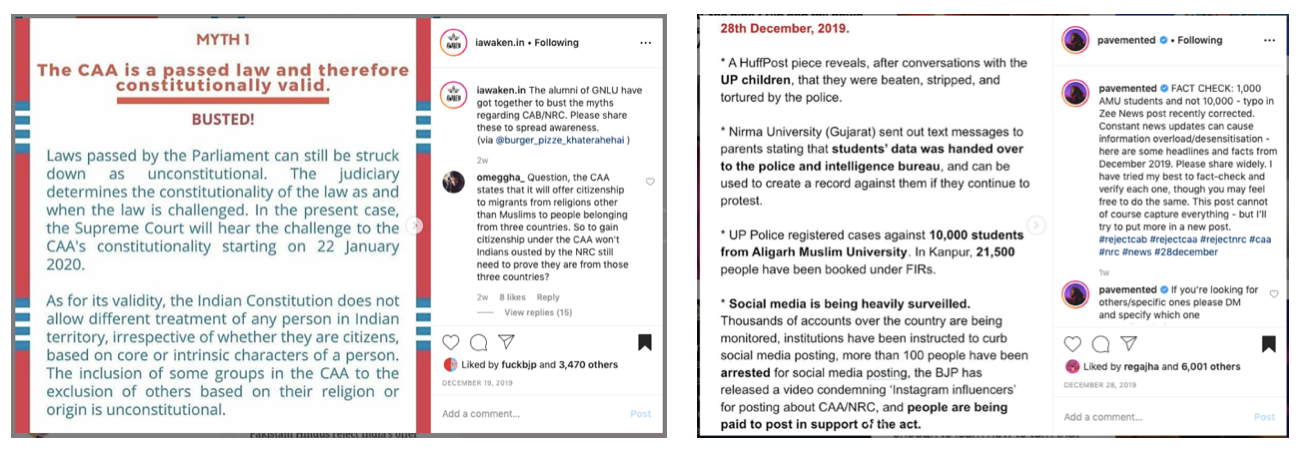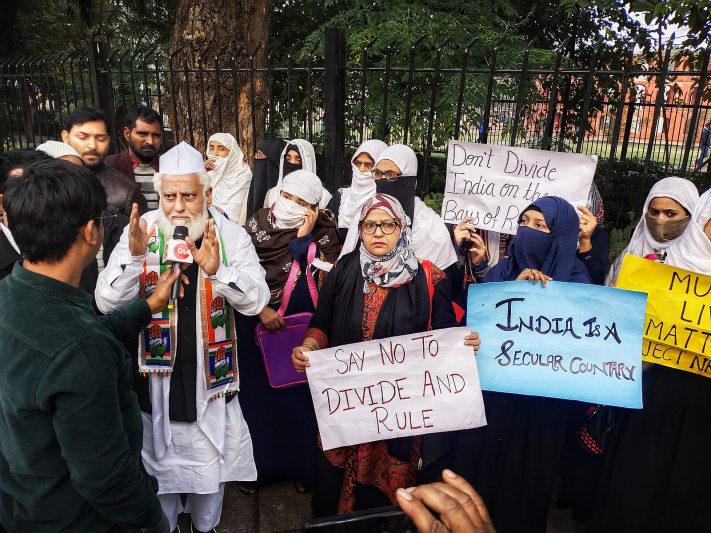by: Gopika Shaji
When Indian police fired teargas at students at Jamia Millia Islamia University campus on the night of Decemeber 15th 2019, social media–specifically Instagram stories–went wild with live video recordings of the incident.
The students were protesting the controversial Citizenship Amendment Act (CAA)—a recently-passed piece of legislation which fast tracks Indian citizenship for refugees from Afghanistan, Pakistan and Bangladesh—as long as they aren’t Muslim.


Many of the protestors used Instagram to share stories warning how the law could reignite religious tensions, share information about protests against religious discrimination, and alert others about police brutality.
It is an interesting tactic. Instagram stories—particularly when they are coming from a variety of different people, from different parts of a country and in high volume are difficult to dispute. Due to the platform’s popularity among millennials and generation Z, student protest organizers have been using it to share information about demonstrations, and what to do if someone is arrested.
It isn’t just students, either. Many experts, researchers and activists have taken to social media to release verified, credible and well referenced data, in order to help the people of India understand the legality, injustice and political reasons inspiring people to take to the streets. Some independent media outlets, more often than not created by young people exclusively use Instagram to upload their articles and news reporting in the form of IGTV videos. The immediate and personal nature of the social media content, has helped unite tens of thousands to fight against the unconstitutional law and brutal crackdown on dissent.

While many criticize Instagram, and other social media platforms for spreading unverified information, Indian youth are also using it to debunk false statements from the government, and hold power to account. When India’s Minister of Home Affairs, Amit Shah insisted the National Register of Citizenship (NRC) has nothing to do with the anti-Muslim legislation, Instagram users were quick to pull up videos of him explaining the chronological implementation of both policies. Debunked.
Still, the platform presents this particular movement with challenges. On Instagram—as with many other platforms—what you see is what you follow; what you follow is what you see. Among the various information collating social media pages, unsurprisingly there are those promoting and, more often than not, creating fake news as propaganda material in order to sway the narrative of the protests toward their desired political leaning. BJP IT cells have used the platform to spread propaganda advertisements, fake tweets, as well as missed call campaigns to gain support of the masses. This becomes the source of information for those seeking validation and arguments against the anti-government protestors.
In times like these, it might seem like both social media and mainstream news outlets are failing at doing what they should do best- provide factually correct information. To use these platforms now, becomes overwhelmingly difficult. For news readers, it boils down to an individual’s intellect to analyze every piece of information that they consume, and collect a range of different information from all available platforms. Finding yourself in an echo chamber is just as harmful as falling for misinformation—and the algorithms of social media platforms only make the problem worse.
Nevertheless, it is Instagram that is allowing young people to send everything, from calls for help for students facing police violence, to fact-checked explainers about the constitutionally of the law to conversation-starting memes around the world, generating awareness of what is happening in the world’s largest democracy. As one of the activists says, “Right now students are doing a great job at explaining the nuances of CAA and NRC to people who might not otherwise what is at stake.”
Nenad Radoja
Contrary to popular belief, Lorem Ipsum is not simply random text. It has roots in a piece of classical Latin literature from 45 BC, making it over 2000 years old. Richard McClintock, a Latin professor at Hampden-Sydney College in Virginia, looked up one of the more obscure Latin words, consectetur, from a Lorem Ipsum passage, and going through the cites of the word in classical literature, discovered the undoubtable source.
